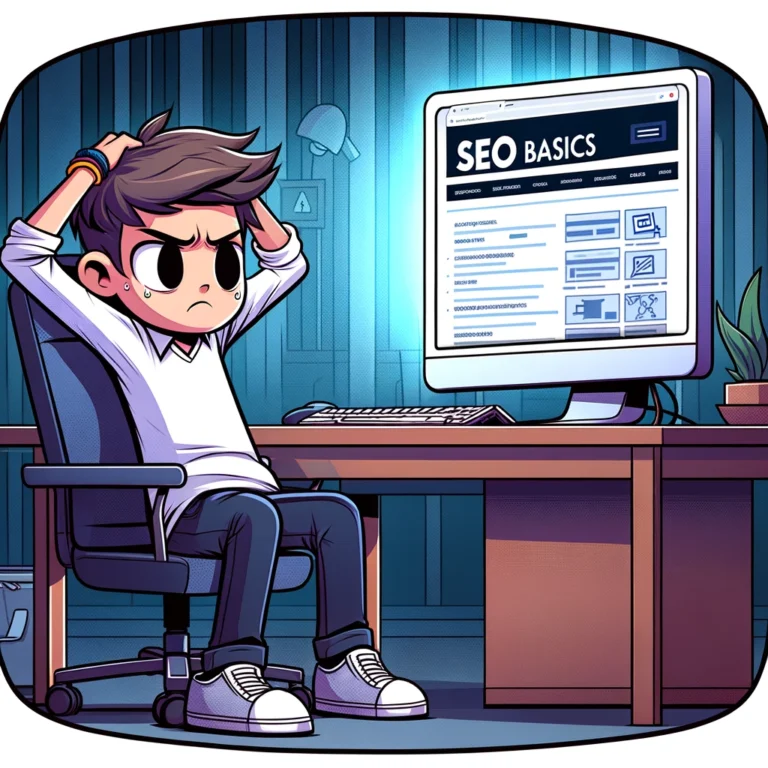In the digital age, the speed at which a website loads can be the deciding factor between a successful online presence and one that falters. Site speed is not just a matter of user convenience; it’s a critical component of Search Engine Optimization (SEO). This article will explore the role of site speed in SEO, why it matters, and how you can optimize it to improve your rankings.
Understanding Site Speed
Site speed refers to how quickly a website becomes fully interactive and usable to the visitor. This includes everything from the time it takes for text and images to load to the responsiveness of interactive elements. Site speed is measured in several ways, with the most common metrics being page load time, First Contentful Paint (FCP), and Time to Interactive (TTI).
Why Site Speed Matters for SEO
Search engines like Google aim to provide the best user experience, which includes how quickly pages load. Websites that load faster are often ranked higher in search results because they offer a better user experience. Slow-loading sites not only frustrate users but also increase bounce rates and reduce the overall time spent on the site, which can negatively impact SEO rankings.
1. User Experience and Bounce Rates
A fast-loading site retains visitors longer. If a site takes too long to load, users are more likely to leave, or “bounce,” which search engines record. High bounce rates can signal to search engines that the site may not be valuable or relevant, lowering its ranking.
2. Increased Engagement
Faster sites facilitate smoother interactions, encouraging visitors to engage more deeply with the content, from reading articles to viewing products. Increased engagement leads to more time spent on the site, more page views, and often, more conversions—all positive signals to search engines.
3. Mobile Optimization
With the rise of mobile browsing, site speed becomes even more crucial. Mobile users expect quick loading times, even on less reliable network connections. Google’s mobile-first indexing bases rankings on the mobile version of a site, making mobile speed optimization paramount.
How to Measure Site Speed
Before you can improve your site speed, you need to understand your current performance. Tools like Google’s PageSpeed Insights provide a comprehensive look at your site’s speed on both desktop and mobile platforms. This tool gives a score based on performance and offers specific suggestions for improvement.
Tips for Improving Site Speed
Improving site speed can seem daunting, but there are several effective strategies you can implement:
1. Optimize Images
Large image files can significantly slow down your website. Optimizing images by compressing them and adjusting their dimensions for the web can drastically reduce their load time without compromising quality.
2. Minimize HTTP Requests
Each piece of your site (scripts, stylesheets, images) requires an HTTP request to load. More requests mean slower pages. Reducing the number of elements on your page, using CSS sprites, and consolidating scripts and style sheets can help minimize these requests.
3. Leverage Browser Caching
When you enable caching, you allow visitors’ browsers to store copies of your site’s files for faster access on subsequent visits. This dramatically speeds up loading for repeat visitors.
4. Improve Server Response Time
Your server response time can be affected by the amount of traffic you receive, the resources each page uses, the software your server uses, and the hosting solution you choose. Optimize your web server configuration, and consider upgrading to a more robust hosting solution if necessary.
5. Use a Content Delivery Network (CDN)
A CDN stores copies of your site on multiple servers around the world, allowing users to access your site from a server that is geographically closer to them, which decreases load time.
In today’s fast-paced digital environment, site speed is more than just a convenience—it’s a crucial part of SEO that affects your site’s visibility and success. By understanding and improving your website’s speed, you’re not only enhancing user experience but also boosting your SEO rankings. Start with the basics: measure your current performance, implement practical speed improvements, and monitor your site’s SEO performance over time.

The Long-Term Benefits of Improving Site Speed
Enhancing site speed has benefits that extend beyond immediate improvements in SEO rankings and user satisfaction. Here’s a closer look at the long-term advantages of investing in faster website performance:
1. Better Conversion Rates
Faster sites convert better. Whether you’re selling products, gathering sign-ups, or pushing visitors to another call to action, a quick-loading page improves the user’s experience and increases the likelihood of them completing the desired action. Studies have shown that even a one-second delay in page response can result in a 7% reduction in conversions.
2. Enhanced Brand Perception
Speed is a fundamental aspect of professional web presence. A fast-loading site reflects positively on your brand, conveying a sense of efficiency and reliability. Conversely, a slow site can make your business appear outdated or unreliable, potentially turning customers away to competitors.
3. Reduced Operating Costs
Improving site speed can also reduce operational costs. Faster sites use fewer data resources and can handle more traffic with the same server resources. This efficiency can lower hosting costs and reduce the need for frequent hardware upgrades.
4. Improved Search Engine Ranking Over Time
While immediate improvements in SEO are a primary motivation for optimizing site speed, the long-term effects are equally significant. Search engines continuously update their algorithms to focus more on user experience. Sites that consistently demonstrate quick load times and stable performance are likely to enjoy sustained improvements in search engine rankings.
Advanced Strategies for Enhancing Site Speed
Once you have implemented the basic strategies for improving site speed, consider these advanced techniques to further optimize your website:
1. Optimize Critical Rendering Path
The critical rendering path is the sequence of steps the browser must take to convert HTML, CSS, and JavaScript into a visible webpage. Optimizing this path involves minimizing the impact of each step, reducing the amount of code processed, and enhancing the way resources are loaded. Techniques include inlining critical CSS, deferring non-critical JavaScript, and removing render-blocking resources.
2. Implement Accelerated Mobile Pages (AMP)
Google’s Accelerated Mobile Pages (AMP) project is designed to make web content load faster on mobile devices. Implementing AMP can provide a significant speed boost on mobile devices by using a simplified HTML code and leveraging extensive caching provided by Google’s AMP cache.
3. Prioritize Above-the-Fold Content (Lazy Loading)
Lazy loading is a design pattern that delays the loading of non-critical resources at page load time. Instead, these resources are loaded at the moment they are needed (usually when they enter the viewport). This means that the initial page load is much faster, enhancing perceived performance and keeping users engaged.
Monitoring and Continuous Improvement
Improving site speed is not a set-it-and-forget-it task. Continuous monitoring is essential to ensure that your website remains fast and efficient. Regularly use tools like Google PageSpeed Insights, GTmetrix, or WebPageTest to check your site’s speed and follow up on any new recommendations.
Setting Up Performance Budgets
One effective way to maintain site speed is by establishing performance budgets. This strategy involves setting specific limits on the size of pages and individual resources (like JavaScript, CSS, and images), ensuring that they do not exceed predefined thresholds without justification. This keeps everyone on the development team accountable and focused on maintaining a high-performance website.
Conclusion
The importance of site speed cannot be overstated in the context of SEO and overall user experience. By taking a proactive approach to optimize and monitor site speed, businesses can ensure better user engagement, higher SEO rankings, improved conversion rates, and a strong online presence. Start by understanding your current site speed, implement immediate improvements, and commit to ongoing optimization. The effort will not only contribute to a better user experience but also to the long-term success of your online endeavors.



